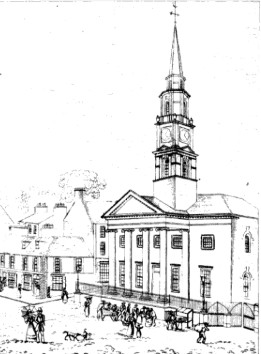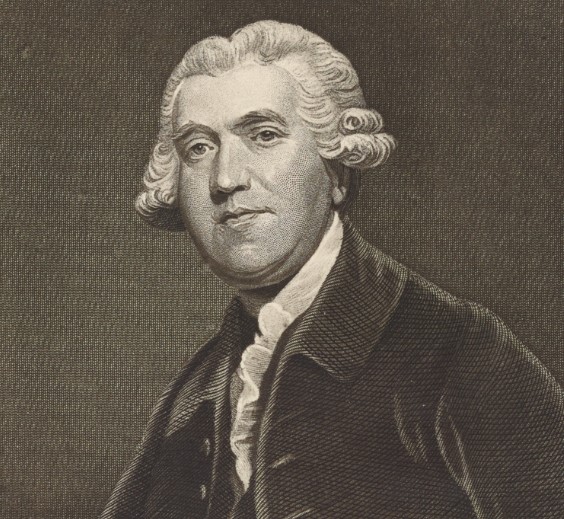On 23 November 1926 a large crowd gathered at St Margaret’s Westminster hoping to catch a glimpse of the young couple who were about to be married there. There was such a crowd that mounted police were called out to help. It was reported
that a long line of guests waited to get into the church, and that “At half-past one the long line of guests waiting outside under the awning
resembled a theatre queue. This line
grew in size until it was impossible for any more guests to alight from their
cars, and they had to remain in them until the people began to move into the
church”.

The groom was John Alan Burns (28), 4th Baron Inverclyde and grandson of the founder of the Cunard shipping company. He was described as “one of London’s most eligible bachelors”, having inherited over £2 million and the title on the death of his father in 1919. The bride was Olive Sylvia Sainsbury (19), daughter of Arthur Sainsbury of Gloucester House, Park Lane, London
and granddaughter of John James Sainsbury, founder of the Sainsbury grocery empire.
 |
| Olive Sainsbury, Lady Inverclyde |
However when the bride and her father arrived at the church they were in for a bit of a shock as the groom had not yet turned up! They had a 20 minute wait before he arrived and he had to be admitted to
the church by a side door! It was later
explained that the hired car he had ordered to get him to the church had gone
to the wrong address and was late getting to him. (Another report was that he was late
because his car had broken down on the way to the church.) His best man was
Huttleston Broughton.
The bride was accompanied by six bridesmaids (Violet Sainsbury, her elder sister,
Violet Hibbert, Betty Somerset, Eileen Cowlrick, Gwen Wilmot and Rosemary Hope
Vere), two little flower girls (Nefertari Bethell and Riona Maclean) and two
young trainbearers (Vernon Coats and Michael Craig). Olive Sainsbury’s dress was “a beautiful medieval gown of ivory
panne, cut with a low waist, and with a skirt touching the ground. It was finished with a girdle of pearls, and
had a train of fine chiffon, trimmed with diamante. Her lace veil was edged with pearls and,
instead of a bouquet, she carried an ivory bound Prayer Book.” Eventually the ceremony took place conducted by Canon Carnegie. After the service, pipers of the Scots Guards (Lord
Inverclyde’s regiment) piped the bride and bridegroom out of the church. There's an amazing piece of old film of the newlywed couple exiting the church entitled "Smart Society Wedding" - view here.
The reception was held at 2 Gloucester House. The wedding gifts (over 400) were displayed
in a separate room and chief among them was a clock and alabaster ash tray from
Princess Louise, Duchess of Argyll. The
tenants of Castle Wemyss gave the bridegroom a sliver tray. The captain and crew of Inverclyde's yacht Beryl gave
a silver salver. After the reception, the couple, the bride having changed
into an apple-green velvet coat trimmed with lynx and a green frock, left for
their honeymoon in a “little racing motor car”, with the bride driving. They spend their honeymoon on a motor tour of
the continent.
Burns Family
John Alan Burns inherited Castle Wemyss in Wemyss Bay on the West of Scotland. His father, James Cleland Burns, 3rd Baron
Inverclyde married Charlotte Mary Emily Nugent Dunbar (her family owned Machermore
Castle in Newton Stewart). Here's a brief list of the Burns family - Sir George Burns (1795-1890) was the founder of G&J Burns
with his younger brother James Burns.
They later joined with Samuel Cunard to form the Cunard Line. George Burns was made a baronet at the age of
94 in 1889. He died a year later ,and
the title passed to John Burns (1829-1901) known as Baron Inverclyde who had taken
over the family business in 1860. On his
death the title passed to his son, George Arbuthnot Burns (1861-1905) 2nd
Baron Inverclyde. He and his wife, Mary
Fergusson had no children. On his death
the title passed to his younger brother James Cleland Burns (1864-1919) 3rd Baron Inverclyde who was
the father of John Alan Burns (1897-1957).
John Alan Burns was educated at Eton and the Royal Military College in Berkshire, He was formerly a
lieutenant in the Scots Guards. He served in the first World War and was wounded by a bullet in the hand in France. The wound was infected by gangrene, and he
was sent home. Rather than returning to
the front he was given a job at the War Office in London. He decided against working for the family Cunard business
and instead became aide-de-camp of the Governor of Gibraltar from 1920-21.
Castle Wemyss
It was 1827 before the newlyweds visited Castle Wemyss. In June 1927 Lord Inverclyde took his bride to Castle
Wemyss, where they were cheered by many of the local people and
estate workers. The crew of his yacht,
Beryl attached ropes to the car and pulled it from the main gate of the estate
to the front door of the house. Lord
Inverclyde carried his bride over the threshold. The yacht Beryl was Commodore Yacht at the opening of Clyde
Fortnight at Largs later that month.
 |
| Castle Wemyss, Wemyss Bay |
Divorce
There was to be no happy ending for the young couple. Lord Inverclyde was granted a divorce from his wife on 21 November
1928. The divorce was sought on the
grounds of “misconduct” (adultery) alleged to have taken place in June in a Paris hotel. No defence was put forward and the only
witnesses at court were Lord Inverclyde’s London butler, Thomas James Bull and
Elsie Morris, a former maid to Lady Inverclyde.
 |
| Lady Inverclyde and 2nd husband James Pearce |
Just a few days later on 5
December 1928 Lady Inverclyde married James Townsend Pearce (1904-1947). It was discovered that they had previously been secretly engaged before her
marriage to Lord Inverclyde. Once again large crowds gathered outside the London Registry Office where the marriage was to take place. A newspaper reported that the couple's two dogs had been present at the ceremony and had almost started a fight with another dog brought along by one of the guests!
The couple
had a daughter together but divorced in June 1933. James Townsend Pearce (described as a horse dealer) was granted custody of their daughter, Joanna. Again the divorce was was her alleged misconduct with Leopold Frank Partridge. James Pearce later remarried.
 |
| Olive and Leopold Frank Partridge |
Not long afterwards, on 1 February 1934, Olive married for the third time. Her third husband was Leopold Frank Partridge (1901-1976), an art dealer and racehorse owner. They spent their honeymoon with various hunts in Leicestershire. A curious incident occurred in March of 1936 when Olive, on horseback joined riders on the last lap in the Leicestershire Hunt Steeplechase at Melton Mowbray. She was fined £10! In August 1948 Leopold Frank Partridge was granted a divorce from Olive on the grounds of her desertion.
Lord Inverclyde and Castle Wemyss
Lord Inverclyde married again in 1929. This marriage was equally disastrous and ended in divorce (more in a later post)! He had no heirs and after his death at Castle Wemyss in 1957, none of the remaining family could afford to keep Castle Wemyss which was sold and demolished. There's a great site History of Wemyss Bay which gives a lot more on the history of the area (click on link).

.JPG)
.JPG)
.JPG)
.JPG)
.JPG)
.JPG)
.JPG)









.JPG)



















.JPG)
%20very.JPG)
.JPG)


